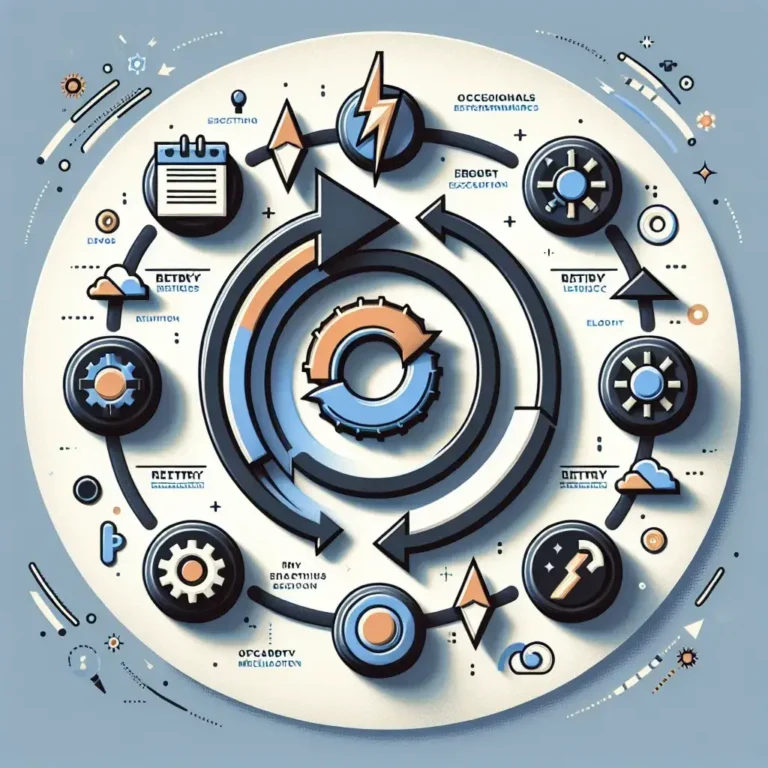
Why Marketing Teams Love Competitor Monitoring Tools: The Ultimate Guide to Staying Ahead
The Strategic Revolution in Modern Marketing
In today’s hyper-competitive digital landscape, marketing teams are constantly seeking innovative ways to outmaneuver their competition and capture market share. The emergence of competitor monitoring tools has fundamentally transformed how businesses approach strategic planning, campaign development, and market positioning. These sophisticated platforms have become indispensable assets for marketing professionals who understand that knowledge truly is power in the battle for consumer attention.
The modern marketing environment is characterized by rapid changes, evolving consumer preferences, and an increasingly crowded marketplace. Traditional methods of competitor analysis, such as manual research and periodic market studies, are no longer sufficient to keep pace with the dynamic nature of digital marketing. This reality has driven marketing teams to embrace advanced monitoring solutions that provide real-time insights into competitor activities, strategies, and performance metrics.
Understanding the Core Appeal of Competitor Monitoring
Marketing teams gravitate toward competitor monitoring tools for several compelling reasons that directly impact their ability to execute successful campaigns and achieve business objectives. These tools serve as strategic intelligence platforms that offer unprecedented visibility into competitor activities across multiple channels and touchpoints.
Real-Time Market Intelligence
One of the primary attractions of competitor monitoring tools is their ability to deliver real-time market intelligence. Marketing professionals can track competitor pricing strategies, promotional campaigns, content marketing initiatives, and social media activities as they unfold. This immediate access to competitive information enables teams to respond quickly to market changes and capitalize on emerging opportunities.
The speed of information delivery is crucial in today’s fast-paced marketing environment. By the time traditional market research reports are compiled and analyzed, the competitive landscape may have already shifted significantly. Competitor monitoring tools eliminate this lag time, providing marketing teams with the agility needed to make informed decisions and adjust strategies in real-time.
Comprehensive Multi-Channel Coverage
Modern competitor monitoring tools excel at providing comprehensive coverage across multiple marketing channels and platforms. Marketing teams can simultaneously track competitor activities on social media, search engines, email marketing, content platforms, advertising networks, and e-commerce sites. This holistic view enables teams to understand the full scope of competitor strategies and identify patterns that might not be apparent when examining individual channels in isolation.
The multi-channel approach is particularly valuable for marketing teams managing complex, integrated campaigns across various touchpoints. By understanding how competitors are allocating resources and messaging across different channels, marketing professionals can optimize their own channel strategies and identify potential gaps or opportunities in the market.
Data-Driven Decision Making Excellence
The love affair between marketing teams and competitor monitoring tools is largely rooted in the superior quality of data-driven insights these platforms provide. Unlike subjective assessments or incomplete information gathered through manual research, these tools deliver objective, quantifiable data that forms the foundation for strategic decision-making.
Performance Benchmarking and Analysis
Competitor monitoring tools enable marketing teams to establish meaningful performance benchmarks by comparing their metrics against industry leaders and direct competitors. This benchmarking capability extends beyond simple vanity metrics to include sophisticated analysis of engagement rates, conversion performance, market share trends, and customer acquisition costs.
The ability to contextualize performance within the broader competitive landscape helps marketing teams set realistic goals, identify areas for improvement, and celebrate genuine achievements. Rather than operating in a vacuum, teams can understand where they stand relative to their competition and develop targeted strategies to close performance gaps or capitalize on competitive weaknesses.
Trend Identification and Predictive Insights
Advanced competitor monitoring tools leverage machine learning and artificial intelligence to identify emerging trends and provide predictive insights about future market developments. Marketing teams can spot patterns in competitor behavior, seasonal fluctuations, and emerging opportunities before they become obvious to the broader market.
This predictive capability is particularly valuable for strategic planning and budget allocation. Marketing teams can anticipate competitive responses to their own initiatives, prepare for seasonal marketing battles, and position themselves advantageously for upcoming market shifts. The ability to think several moves ahead in the competitive chess game gives marketing teams a significant strategic advantage.
Operational Efficiency and Resource Optimization
Marketing teams appreciate competitor monitoring tools for their ability to dramatically improve operational efficiency and optimize resource allocation. These platforms automate many time-consuming research tasks that would otherwise require significant manual effort from marketing professionals.
Automated Research and Reporting
Traditional competitor research involves countless hours of manual data collection, analysis, and report generation. Competitor monitoring tools automate these processes, freeing up marketing team members to focus on higher-value strategic activities. Automated reporting features ensure that stakeholders receive regular updates on competitive developments without requiring dedicated research personnel.
The time savings achieved through automation are substantial and measurable. Marketing teams can redirect human resources toward creative strategy development, campaign optimization, and customer engagement initiatives rather than spending countless hours on repetitive research tasks.
Centralized Information Management
Competitor monitoring tools serve as centralized repositories for competitive intelligence, eliminating the fragmented approach that often characterizes manual research efforts. Team members can access consistent, up-to-date information from a single platform, reducing confusion and ensuring that everyone is working with the same data set.
This centralization is particularly valuable for larger marketing teams or organizations with multiple departments involved in competitive analysis. The shared platform approach promotes collaboration, reduces duplication of effort, and ensures that insights are accessible to all relevant stakeholders.
Strategic Advantage Through Competitive Intelligence
The strategic advantages provided by competitor monitoring tools extend far beyond simple data collection. These platforms enable marketing teams to develop sophisticated competitive intelligence capabilities that inform every aspect of their marketing strategy.
Opportunity Identification and Market Gap Analysis
Competitor monitoring tools excel at identifying market opportunities and gaps that competitors may have overlooked or inadequately addressed. By analyzing competitor content strategies, keyword targeting, audience engagement patterns, and campaign messaging, marketing teams can identify underserved market segments or content topics with high potential impact.
This opportunity identification capability is particularly valuable for content marketing strategies, where understanding competitor content gaps can inform editorial calendars and topic selection. Marketing teams can position themselves as thought leaders in areas where competitors have limited presence or expertise.
Campaign Optimization and Performance Enhancement
The insights provided by competitor monitoring tools directly contribute to campaign optimization and performance enhancement. Marketing teams can analyze successful competitor campaigns to understand effective messaging strategies, creative approaches, and targeting methodologies. This competitive intelligence informs their own campaign development and helps avoid strategies that have proven ineffective for competitors.
The learning opportunities provided by competitor analysis are invaluable for continuous improvement. Marketing teams can iterate on proven successful approaches while avoiding costly mistakes that competitors have already made.
Crisis Management and Risk Mitigation
Competitor monitoring tools provide marketing teams with early warning systems for potential threats and competitive challenges. This proactive approach to risk management enables teams to respond quickly to competitive threats and protect their market position.
Early Threat Detection
Advanced monitoring capabilities can detect emerging competitive threats before they fully materialize. Whether it’s a competitor launching a direct attack on key market segments, introducing disruptive pricing strategies, or developing innovative product offerings, marketing teams can identify these developments early and formulate appropriate responses.
The early warning capability is particularly crucial in highly competitive industries where market dynamics can shift rapidly. Marketing teams that can detect and respond to threats quickly are better positioned to maintain their competitive advantages and protect their market share.
Reputation Management and Brand Protection
Competitor monitoring tools often include capabilities for tracking brand mentions, sentiment analysis, and reputation management. Marketing teams can monitor how competitors are positioning themselves relative to their brand and identify potential reputation risks or opportunities for competitive differentiation.
This brand protection aspect is increasingly important in the age of social media and digital communications, where competitive attacks or negative positioning can spread rapidly across multiple platforms.
Future-Proofing Marketing Strategies
The relationship between marketing teams and competitor monitoring tools continues to evolve as these platforms become more sophisticated and comprehensive. The future promises even greater integration of artificial intelligence, predictive analytics, and automated response capabilities.
Artificial Intelligence and Machine Learning Integration
Next-generation competitor monitoring tools are incorporating advanced AI and machine learning capabilities that can automatically identify patterns, predict competitor behavior, and recommend strategic responses. These intelligent systems will enable marketing teams to operate with even greater efficiency and strategic sophistication.
The evolution toward AI-powered competitive intelligence represents a significant opportunity for marketing teams to gain sustainable competitive advantages through superior data analysis and strategic planning capabilities.
Integrated Marketing Technology Ecosystems
The future of competitor monitoring tools lies in their integration with broader marketing technology ecosystems. Marketing teams are increasingly seeking platforms that can seamlessly connect competitive intelligence with campaign management, customer relationship management, and marketing automation systems.
This integration will enable marketing teams to automatically adjust campaigns based on competitive developments, personalize messaging based on competitive positioning, and optimize resource allocation in response to competitive threats and opportunities.
Maximizing Return on Investment
Marketing teams love competitor monitoring tools because they provide measurable returns on investment through improved campaign performance, reduced research costs, and enhanced strategic decision-making capabilities. The quantifiable benefits of these platforms make them easy to justify within marketing budgets and organizational planning processes.
The cost-effectiveness of competitor monitoring tools becomes apparent when considering the alternative costs of manual research, missed opportunities, and suboptimal strategic decisions. Marketing teams that invest in sophisticated monitoring capabilities consistently outperform those that rely on traditional competitive analysis methods.
As the marketing landscape continues to evolve and become increasingly competitive, the role of competitor monitoring tools will only become more critical. Marketing teams that embrace these technologies today are positioning themselves for sustained success in tomorrow’s even more challenging competitive environment.
The love affair between marketing teams and competitor monitoring tools represents a fundamental shift toward data-driven, intelligence-based marketing strategies. These platforms provide the insights, efficiency, and strategic advantages that modern marketing teams need to thrive in today’s competitive marketplace. As these tools continue to evolve and improve, their value to marketing professionals will only continue to grow, making them essential components of any serious marketing technology stack.




Leave a Comment